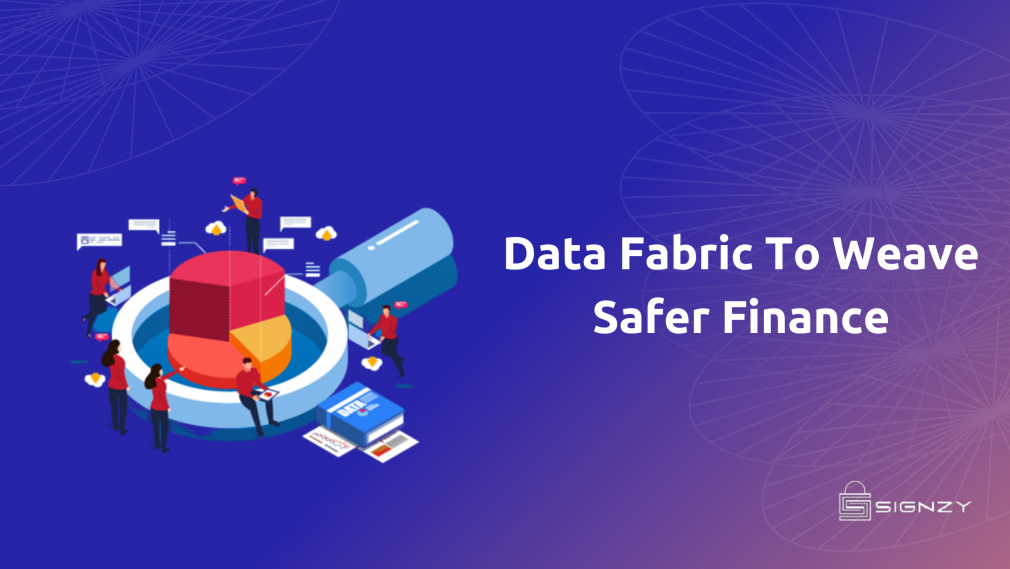Data Fabric To Weave Safer Financial Technology- How It Can Be Used To Improve Financial Services
The excellent offerings of fintech firms derive from the creativity of startup founders and the people they drive to work for their companies, who have changed the financial technology industry as we know it. These innovators see everything possible and let their imaginations run wild when crafting ways to enhance our digital interactions. As a result of this dynamism, some fintech startups have achieved incredible success.
Conventional banks are catching up with newer fintech companies by providing fintech-like experiences and innovative new products. Perhaps these banks are inspired or threatened by what they see in the fintech industry. But, regardless of their drive and motivations, they are increasingly willing to up their game to the plate and compete with novel fintech offerings. This is because fintech and multiple banks — at least those that want to be around in the future — clearly understand that state-of-the-art technology is vital to remain competitive in the sector.
Thus, banks, other financial institutions, and fintech companies deploy new technology to meet their implied promise to customers that if the customers come to them, they will get better services, offerings, and products. This is how AI-artificial intelligence, machine learning, deep learning, big data, and data science have entered the finance industry. Therefore, financial institutions should obtain as much data as possible to use this technology and provide a competitive service and good user experience without compromising data privacy.
The Fundamental Requirement In Financial Technology
This fundamentally requires financial institutions(FIs) to consider the regulatory constraints on data access and use. A further challenge is that, while many companies might be great at collecting mass and personal data, they may actually have difficulties uncovering actionable insights that could help them provide better banking offerings and customer experiences. It certainly does not help that more extensive and older financial companies deal with data silos, legacy systems, and unstructured data. And then, there is the big baddie of cyber security, which leads many executives to hold back when developing new strategies for collecting and using customer data.
Data is the new oil. It’s precious, but they can not use it if it is unrefined. It has to be transformed into gas, plastic, chemicals, etc., to create a valuable entity that drives profitable activity, so all data(even personal data) must be broken down and analyzed to generate value.
Many would agree with this analogy. But unfortunately, companies have difficulty truly managing the vast amount of data and information available in our technologically networking world. This data is stored in various formats and places, making it challenging to fully utilize its power and potential. In addition, this data is increasing exponentially due to the digital footprint that all the customers leave on all the available online services they use.
Data Fabric- Handling The Issue Of Mass And Personal Data In Financial Technology
The problem is that we have too much data. This is precisely where data fabric will help companies. The data fabric’s value is that it enables improved insights because it provides access to more data from an extensive pool of varied and distributed data sources. This is on-premises or in public clouds that businesses usually use and identifies the specific relationships between data to provide better context. In addition, the data fabric ensures proper data governance, which is vital when scaling the utilization of data for analytics and AI.
This ensures proper data governance and allows companies to implement a winning technology strategy. In addition, a data fabric architecture will enable companies to utilize a hybrid and a mixture of multiple clouds, allowing portability in data storage and applications. For instance, IBM’s definition of a hybrid cloud includes on-prem data stores and applications, not necessarily just an on-prem private cloud.
Despite the challenges and hurdles posed by an excess of data, numerous players in the financial technology sphere are moving in the right direction, seeking to overcome the significant obstacles that come with the increased implementation of artificial intelligence and customer demands for personalization. Data fabric addresses multiple issues companies face in their attempts to better and update their technology strategies. Furthermore, it helps institutions comply with strict privacy regulations while using customer data.
Taking It A Step Further
In financial technology services, tech-savvy users long for personalized offerings that consider their financial history and present financial situation to give solutions based on the current requirements and anticipate future needs. To meet this requirement, companies need many data points to make sense of the vast amount of data collected from their customers and give them comprehensive solutions.
If a company knows its customers better and designs solutions based on this knowledge, there will be benefits for the customer and the company.
Many would wish financial companies to take their sophisticated pasts and presents into account to provide them with a more “humanized” banking experience, regardless of the growing use of technology required to reach this.
Faster extraction of the insights is a value of a data fabric; the embedded capability of governance ensures that appropriate data privacy and security is maintained — this is especially critical in the FSS industry. Also, data does not have to be moved and can stay secure at its source per the comment above is essential for highly regulated industries such as Financial Services.
Suppose a company is not up to speed with the better, richer insights gained from properly implementing a data fabric architecture. In that case, it will likely lose out to its competitors. The primary reason is that the customers may move to newer banking providers whose financial solutions are better matched to their current life situation and seamlessly adapt to their future needs.
Racing The Race With Data Fabric
The race is becoming increasingly tense — within the crowded space of new financial competitors, ranging from fintech startups and banks to non-financial companies taking advantage of this embedded-finance trend.
For the future victors in the financial sphere, the right data fabric strategy is not merely an option but a necessity.
Any such form of revamping or upgrading in any organization, done alone, is not smart. It’s always better to see how experienced experts can help you out. Signzy holds a plethora of resources that can improve your processes to a greater extent. With our AI-driven products and services, you can make things better.
About Signzy
Signzy is a market-leading platform that is redefining the speed, accuracy, and experience of how financial institutions are onboarding customers and businesses – using the digital medium. The company’s award-winning no-code GO platform delivers seamless, end-to-end, and multi-channel onboarding journeys while offering totally customizable workflows. It gives these players access to an aggregated marketplace of 240+ bespoke APIs that can be easily added to any workflow with simple widgets.
Signzy is enabling ten million+ end customer and business onboarding every month at a success rate of 99% while reducing the speed to market from 6 months to 3-4 weeks. It works with over 240+ FIs globally, including the 4 largest banks in India, a Top 3 acquiring Bank in the US, and has a robust global partnership with Mastercard and Microsoft. The company’s product team is based out of Bengaluru, and it has a strong presence in Mumbai, New York, and Dubai.
Visit www.signzy.com for more information about us.
You can reach out to our team at reachout@signzy.com
Written By:

Signzy
Written by an insightful Signzian intent on learning and sharing knowledge.



